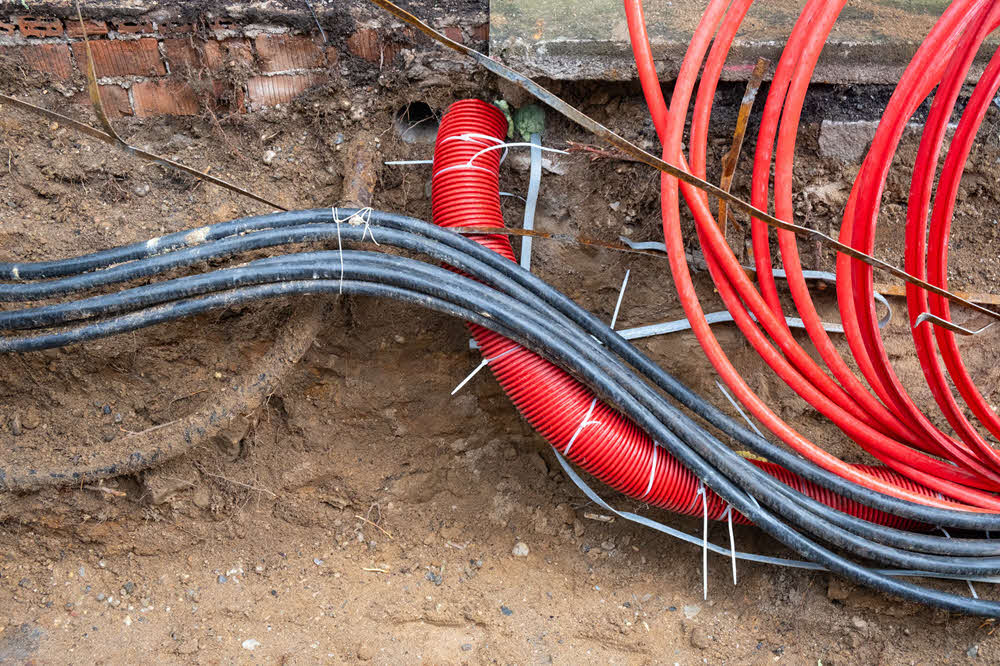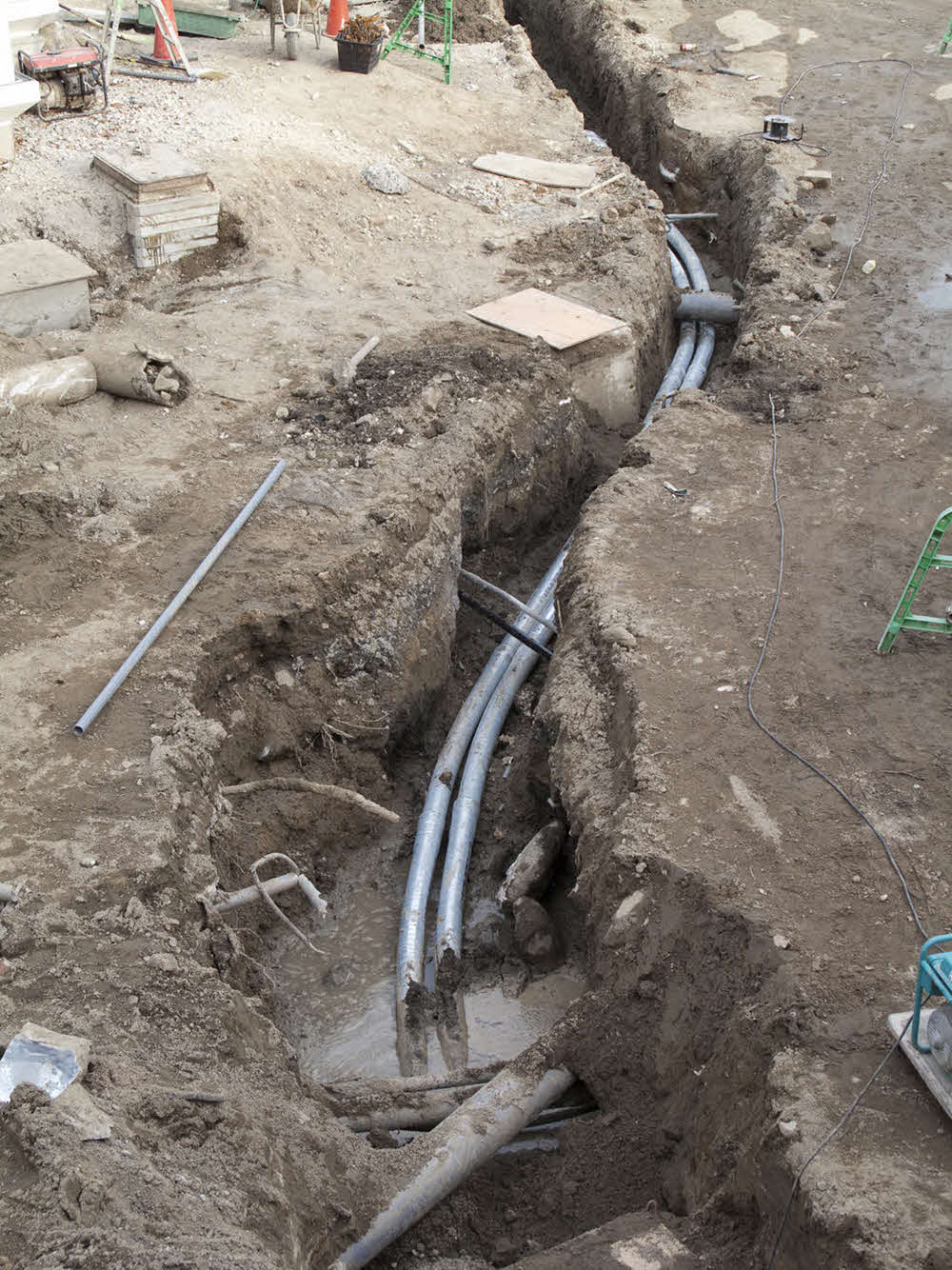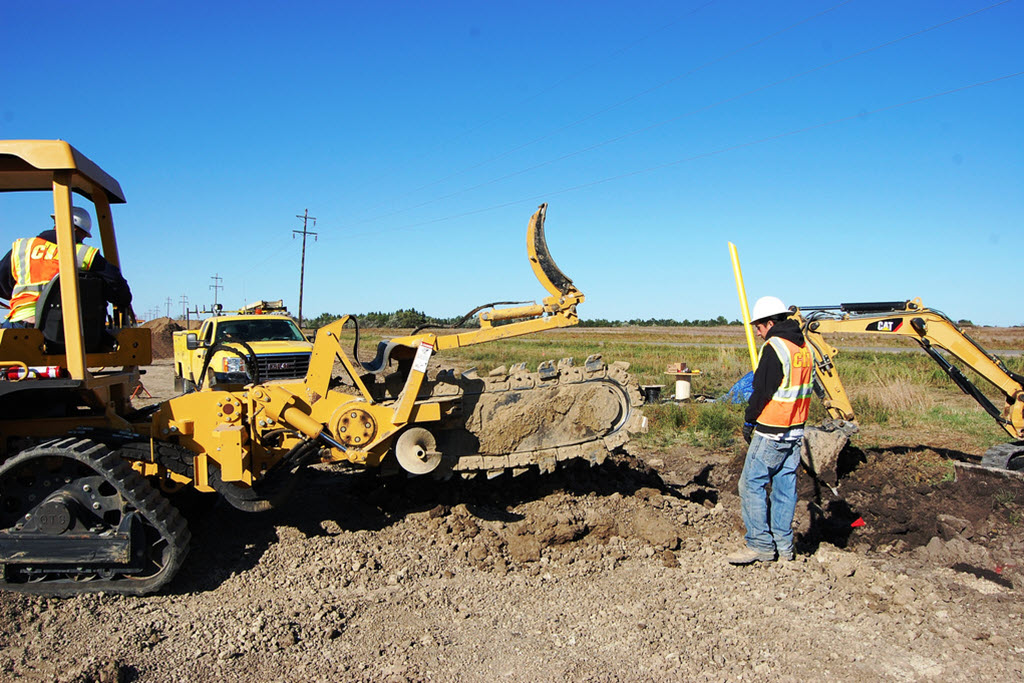Electrical Conduit Servicesin Madison Heights MI
Expert Conduit Installation to Support Electrical and Data Systems
We Are Locally Owned & Operated For Over 37 Years
Contact Us Today!
We Serve Businesses In And Around The Following Cities:
About Electrical Conduit Services
A Comprehensive Guide to Conduits for Electrical Underground Wiring
Electricity, often regarded as a key ingredient for the smooth operation of any commercial establishment, is typically carried from one point to another using a conduit—an essential but often overlooked component. This guide focuses on the conduit for electrical underground in Madison Heights, highlighting the process involved, applicability, and the significant benefits it offers to commercial properties within this vibrant city.
When seeking a robust and dependable solution for running electrical lines in commercial premises, an underground conduit installation proves to be an invaluable investment. This system is particularly handy when trenching for electrical conduit or running an underground electric line. Not only does it provide a secure channel for these vital lines, but it also protects them from potential damage caused by external elements.
One popular option that many businesses in Madison Heights choose for their underground electrical conduit is PVC conduit. Installing PVC conduit underground brings a multitude of advantages. It’s resistant to corrosion and damage; its smooth internal surface facilitates easy wire pulling, and it offers excellent electrical insulation properties. When it comes to running wire in conduit underground, PVC conduit for underground wiring presents a robust and durable solution.
Undertaking an underground conduit installation or running electrical wire near a gas line involves careful planning and professional execution. Companies like D&J Contracting, with years of experience in trench electrical line installations, can ensure a safe and compliant process, significantly reducing the risk of electrical faults that may lead to dangerous incidents or costly downtime. They employ rigorous procedures for trenching for underground electric installations, ensuring the integrity of the conduits and the safety of the building’s occupants.
Process of Installing Underground Electrical Conduit
The installation process for a conduit underground electrical begins with blueprint creation, highlighting the location of the trench and the network of conduits. The next step involves trenching for the electrical conduit, a process that needs expert handling to ensure it adheres to the safety regulations and building codes. The PVC conduit is then laid inside the trench, with each section of the conduit glued together to maintain insularity. Following this, the electrical lines are run through the conduit before filling the trench back.
The safety standards and building requirements in Madison Heights stipulate precise guidelines on running underground electrical service or running an underground power line to a building. Notably, the codes prescribe the minimum depth of the trench and the determinants of the ideal size of the conduit. Companies like D&J Contracting are well-versed with these stipulations and adhere to the best practices, achieving regulatory compliance with their electrical conduit trenching services.
Benefits of Underground Electrical Conduits
Running an electrical line underground using conduits brings numerous benefits. It dramatically reduces the risk of electric shock, minimizes weather-related outages, and safeguards the lines from external damages. Furthermore, these underground conduits help in preserving the aesthetics of the property, as there are no overhead lines marring the view.
If you’re considering upgrading your existing overhead lines, running wire in conduit underground, or setting up a new electrical system within your commercial building in Madison Heights, you’ll undoubtedly see the advantages of choosing an underground electrical conduit. With the reliable services provided by D&J Contracting, you can ensure an efficient, compliant, and long-lasting installation.
In summary, the critical role that conduits play in electrical underground functionalities in commercial properties within Madison Heights can’t be overstated. From the careful planning of the layout, the intricacies involved in the trenching for the electrical conduit, the role of PVC conduits, to the substantial benefits the system offers, this guide has underscored the need for a well-laid conduit system.
When considering a conduit for electrical underground for your commercial property, reach out to experienced service providers such as D&J Contracting who will not only provide top-notch services but will also guide you through the process, ensuring regulatory compliance and overall system efficiency. Set your commercial property up for electrical success by making the switch to an underground conduit system.
Electrical Conduit Services Gallery


Call Us Today to receive your Free Quote for
Conduit For Electrical Underground in Madison Heights
Serving: Madison Heights, Michigan

About Madison Heights, Michigan
Originally part of Royal Oak Township, Madison Heights incorporated as a city by popular vote on January 17, 1955, and chartered on December 6 of that same year, becoming the tenth city government in southern Oakland County. At that time, the 7.2 square miles (18.6 km) city was one of the largest suburban communities in the Metro Detroit area. The first city hall was at 26305 John R Road, the former township offices. On April 5, 1963, a new municipal building was dedicated which is on the present location at 300 West Thirteen Mile Road. The city lies in the Interstate 696 (I-696) and I-75 corridor and is served by two primary school districts, Lamphere and Madison, as well as a full-service municipal government.
According to the United States Census Bureau, the city has a total area of 7.09 square miles (18.36 km), all land.
Although 91% of the buildings in Madison Heights are single-family homes or condominiums (approximately 9,800 residential property owners), 60% of the tax base is fueled by light industrial or commercial property. The city has 15 voting precincts, totaling more than 21,000 registered voters.
Madison Heights shares borders with Troy to the north, Royal Oak to the west, Hazel Park to the south, and Warren to the east. The eastern border of Madison Heights (Dequindre Road) is also the border between Oakland and Macomb counties.
There are more than 112 miles (180 km) of road within Madison Heights, of which the city maintains 105 miles (169 km), 95 miles (153 km) for snow removal, sweeping, and patching. Interstate 75 passes north to south on the west side of the city, and Interstate 696 is the major feature of its southern border. The junction of these two highways is shared with Royal Oak and Hazel Park on the southwest corner of Madison Heights.
| Census | Pop. | Note | %± |
|---|---|---|---|
| 1960 | 33,343 | — | |
| 1970 | 38,599 | 15.8% | |
| 1980 | 35,375 | −8.4% | |
| 1990 | 31,296 | −11.5% | |
| 2000 | 31,101 | −0.6% | |
| 2010 | 29,694 | −4.5% | |
| 2020 | 28,468 | −4.1% | |
| U.S. Decennial Census | |||
As of the 2020 United States census of 2020, there were 28,468 people and 13,487 households in the city. The population per square mile is 4,017.5.
The racial makeup of the city was 80.4% White, 7.8% African American, 0.2% Native American, 7.2% Asian, 0.1% Pacific Islander, 3.6% from two or more races. Hispanic or Latino residents of any race were 2.0% of the population.
There were 13,487 households, of which 14.7% spoke a language other than English at home. People under 65 years of age with a disability accounted for 11.1% of the city’s population, and 11.7% of the city’s population was living below the federal poverty line. Households without a broadband internet subscriptions made up 11.9% of the community.
16% of residents were under the age of 18; and 16.3% were 65 years of age or older. The gender makeup of the city was 49.4% male and 50.6% female.
As of the census of 2010, there were 29,694 people, 12,712 households, and 7,543 families residing in the city. The population density was 4,188.2 inhabitants per square mile (1,617.1/km). There were 13,685 housing units at an average density of 1,930.2 per square mile (745.3/km). The racial makeup of the city was 83.9% White, 6.4% African American, 0.5% Native American, 5.8% Asian, 0.1% Pacific Islander, 0.7% from other races, and 2.7% from two or more races. Hispanic or Latino residents of any race were 2.5% of the population.
There were 12,712 households, of which 27.5% had children under the age of 18 living with them, 41.0% were married couples living together, 12.9% had a female householder with no husband present, 5.4% had a male householder with no wife present, and 40.7% were non-families. 34.1% of all households were made up of individuals, and 11.8% had someone living alone who was 65 years of age or older. The average household size was 2.32 and the average family size was 3.02.
The median age in the city was 38.3 years. 20.4% of residents were under the age of 18; 8.7% were between the ages of 18 and 24; 30.4% were from 25 to 44; 26.6% were from 45 to 64; and 13.9% were 65 years of age or older. The gender makeup of the city was 49.1% male and 50.9% female.
As of the 2000 United States census, there were 31,101 people, 13,299 households, and 8,005 families residing in the city. The population density was 4,341.3 inhabitants per square mile (1,676.2/km). There were 13,623 housing units at an average density of 1,901.6 per square mile (734.2/km). The city’s racial makeup was 89.60% White, 1.82% African American, 0.44% Native American, 4.97% Asian, 0.03% Pacific Islander, 0.46% from other races, and 2.68% from two or more races. Hispanic or Latino residents of any race were 1.61% of the population.
There were 13,299 households, of which 26.9% had children under the age of 18 living with them, 45.2% were married couples living together, 10.5% had a female householder with no husband present, and 39.8% were non-families. 33.8% of all households were made up of individuals, and 12.3% had someone living alone who was 65 years of age or older. The average household size was 2.33 and the average family size was 3.02.
In the city, 22.1% of the population was under the age of 18, 8.1% was from 18 to 24, 35.4% from 25 to 44, 20.2% from 45 to 64, and 14.2% was 65 years of age or older. The median age was 36 years. For every 100 females, there were 95.8 males. For every 100 females age 18 and over, there were 92.9 males.
The city’s median household income was $42,326, and the median family income was $51,364. Males had a median income of $41,478 versus $29,345 for females. The city’s per capita income was $21,429. About 7.0% of families and 8.9% of the population were below the poverty line, including 10.8% of those under age 18 and 13.0% of those age 65 or over.
In 2008, 1.9% of the Madison Heights population were of Vietnamese descent. 168 Asian Mart, a 38,000-square-foot (3,500 m) supermarket, is the largest Asian supermarket in southeast Michigan, and one of the largest in the state. The Chinese Cultural Center is in Madison Heights.
The mayor of Madison Heights is Roslyn Grafstein, who was appointed as Mayor in August 2020 to fill a vacant seat.
Madison District Public Schools and Lamphere Public Schools have public schools serving Madison Heights.
Bishop Foley Catholic High School is a private school.
Four Corners Montessori Academy is a public charter school.
Call Us Today to receive your Free Quote for
Conduit For Electrical Underground in Madison Heights
Related Services in Madison Heights, Michigan
We Serve Businesses In The Following Zip Codes:
48007, 48015, 48021, 48026, 48035, 48036, 48038, 48042, 48043, 48044, 48045, 48046, 48047, 48048, 48050, 48051, 48066, 48071, 48080, 48081, 48082, 48083, 48084, 48085, 48088, 48089, 48090, 48091, 48092, 48093, 48098, 48099, 48225, 48230, 48236, 48310, 48311, 48312, 48313, 48314, 48315, 48316, 48317, 48318, 48397